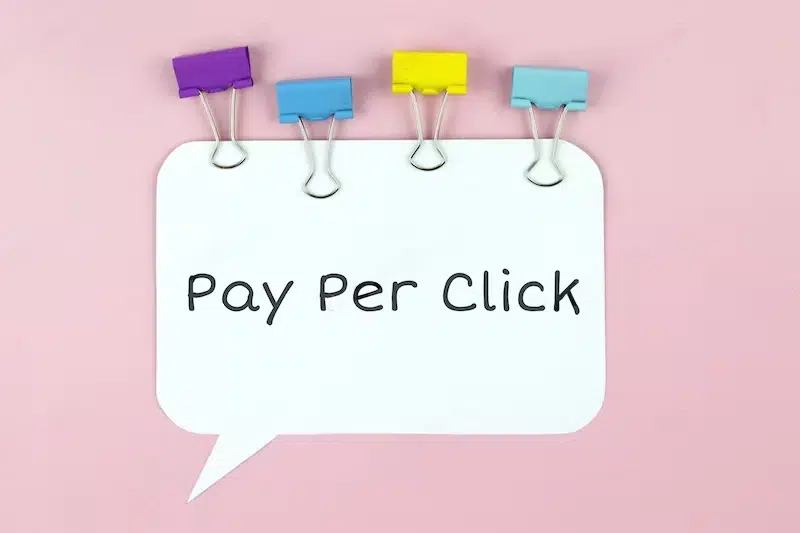You may have heard of dayparting before when it comes to scheduling social media posts. But the truth is that prioritizing when your content shows to better maximize user engagement can help your digital ad campaigns as well.
Creators ranging from Instagram influencers to PPC agencies know how important it is to publish content when their target audience is most active online.
More active users generate more engagement, more clicks, and more opportunities to convert.
And while lots of optimization experts recommend scheduling social media posts, finding the best time to show your paid ads (or “dayparting”) can also be quite effective — if your audience’s behavior supports using this tactic, that is.
What Is Dayparting?
Dayparting was first used in the radio and TV programming industries to break up the broadcast day into several parts. Programs, and advertisements, meant for specific audiences would be scheduled for times that that specific audience typically tuned in.
Ah, the good old days, when six-year-olds wore ties
and doctors recommended cigarettes – image source
In digital advertising terms, dayparting (or ad scheduling) is the practice of only displaying your ad campaigns at certain times of the day or week. Specifically: only showing your ads at the times when they are most likely to generate clicks and conversions (your highest, ROAS spiking stats).
Why Is Dayparting Important For PPC?
Some brands will have audiences that are clearly most active on each platform at specific times during the day or days of the week. Dayparting optimizes these campaigns by devoting more budget to showing ads at these times, increasing your brand’s visibility and results.
The largest PPC platforms, Google Ads and Facebook Ads, already allow advertisers to customize their ad campaign schedules. Google Ads’ schedule breaks down to 15-minute intervals, while Facebook Ads can be scheduled down to the minute.
(Other PPC channels, including Microsoft Ads and Amazon, also offer dayparting, but the principles and processes outlined below are largely the same on all platforms.)
What’s The Catch?
Like every other ad optimization technique, dayparting isn’t foolproof. It’s not going to work for every brand, or every campaign.
Dayparting is the optimization equivalent
to the cologne in Anchorman. – image source
Consumer-facing businesses with steady traffic, such as eCommerce vendors, might not benefit from dayparting. Seasonal variations, like holiday shopping, can also make dayparting difficult. And brands with wide audiences or general offers can isolate audience members unnecessarily by trying to optimize the ad schedule rather than the ad campaign.
In contrast, B2B audiences tend to be more active during business hours, but that doesn’t mean you should only show ads between 9 a.m. and 5 p.m. If you’re targeting small business owners or freelancers, for example, you might get more click-throughs or a higher conversion rate when these folks are working odd hours.
Do You Have Enough Traffic?
We’d be negligent if we didn’t clearly state that most advertisers CANNOT take advantage of dayparting. Frankly, most advertisers don’t have enough conversion data per day or per hour to generate enough statistical significance.
At KlientBoost, we look for a minimum 90% confidence level when making changes for PPC management and conversion rate optimization.
Here’s an example. Let’s say you’re curious about bidding up or down because of the performance of a certain day of the week.
On Tuesday you get 500 clicks, and on Wednesday you get 500 clicks. But on Tuesday you only get 20 conversions, and 50 Wednesday you get 50.
With a simple confidence calculator like this one, you can input those numbers and see if you’re at or above the confidence level.
Finally, dayparting can also drive up ad costs, especially if your target segment’s peak activity mirrors the larger industry’s high-activity time. In this case, competition in the ad space (and your cost per click) might go up.
So, make sure you take all the above into consideration before jumping into Dayparting as if it were a cure-all ad strategy.
Looking For Dayparting Indicators & Opportunities
Before you start dayparting, you’ll need to see if it’s worth the extra effort by examining your audience’s current behavior.
Sometimes these circumstances can happen organically. You or your PPC manager might notice a trend in your campaign performance, for example. Let’s say you get more landing page form completions on the weekends, or more phone calls on Thursdays. You can schedule your ads accordingly to take advantage of the increased visibility at those times.
More often than not, however, opportunities for dayparting come from old-fashioned number-crunching.
You don’t have to put on a visor and reading glasses for this,
but it won’t hurt. – image source
How To Look For Time-Specific Activity in Google Ads
Even if you haven’t spotted a clear performance trend in your campaigns, it’s a good idea to go through your campaigns and look for user behavior that indicates time-specific activity that you can capitalize on.
In Google Ads, this research starts in the Predefined Reports (formerly Dimensions) tab:
- Open the Predefined Reports tab of the campaign you’re analyzing.
Here’s where Predefined Reports are
- In the View drop-down, scroll down to Time.
Date and Time view
- Segment your data by time of day and day of the week.
Metrics segmented by hour of day
- Look for the blocks of time that draw most of your conversions. Use a broad time period to make sure the results are statistically significant.
If you’re a numbers geek and want to take this research to the next level, you can incorporate this process into your regular Google Ads audit.
“Also, we should mention that the flip side of scheduling your ads to appear at the right time is making sure you aren’t paying for them to appear at the wrong time either.”
If you review your segmented data by time and find that no one is converting between 1 and 7 a.m., for example, you can customize your ad schedule to not show ads during those hours. This will reduce clicks that have a low likelihood of converting and save money in your ad budget for more favorable placements.
4 Steps To Set Up Dayparting in Google Ads
Let’s say you complete your research and don’t find any opportunities to customize your ad schedule. All of your traffic is spread evenly, and nothing stands out as particularly useful or effective.
Is your traffic spread this evenly? – image source
Guess what? Dayparting probably isn’t for you. Don’t sweat it — you can go read something else from our Google Ads library.
For the rest of us, creating a simple custom ad schedule in Google Ads with these four steps is easy enough:
- Open the Settings tab and select Ad Schedule.
Where you’ll schedule your ads
- Click the +AD SCHEDULE button to choose the days of the week, hours of the day, etc., that you want to show your ads based on the trends you found in the “Time” view.
- After inputting your schedule, use Set Bid Adjustments to increase or decrease bids for hours or days of the week that have greater or lesser value.
- When your adjustments are in place, start a trial period — in other words, don’t just “set it and forget it.” Let your account run on the new schedule, track your adjustments, and check in on a weekly and monthly basis. Also keep monthly and seasonal fluctuations in mind.
Dayparting Setup In Facebook Ads
You can do a version of the same analysis on your Facebook Ads performance as we did on the Google Ads data above to see if dayparting will be useful for your Facebook PPC.
One notable component you can look for is an “engagement sweet spot” — the intersection of time when most of your audience is on Facebook and the fewest posts are being added.
To customize your ad schedule in Facebook Ads and start dayparting, you’ll begin at the Ad Set level.
- Open Budget and Scheduling and click Lifetime Budget. Schedule a time frame that you want your ad to run. (You can choose Every Day to speed this up.)
- Next, click Optimization for Ad Delivery. Choose Run Ads on a Schedule.
- Select the days and times that you want your ads to run.
Facebook’s ad scheduling offers a simple
and easy visual setup – image source
In addition to the date and time customization on Facebook, you can run ads based on the viewer or ad account’s time zone. This is a good adaptation if your audience spans multiple time zones but looks for your offer at a certain time of day.
Bonus: 4 Quick Steps To Start Dayparting Now
We’ve covered the big-picture ideas behind dayparting and the nitty-gritty details of researching and applying data to your ad scheduling.
But there’s a TL;DR version of this tactic that you can do right now if you want to see if dayparting is right for you.
Reese Garcia, KlientBoost’s Director of eCommerce, has used this on multiple accounts to test the possibilities of dayparting:
- Download performance by hour of day into a spreadsheet (Google Sheets, Excel, etc.)
- Eyeball a range of time where the majority of your campaign’s conversions seem to happen. (This is easier with conditional formatting.)
- Put that data into a pivot table.
- Move the high-converting hours into one group; put the other hours into a separate group.
“Usually one block of time brings in the majority of conversions at a much lower than average CPA,” Reese says, “while the other hours have fewer conversions at a much higher CPA.”
Running through these steps should give you a clear-cut idea of where and when dayparting can work for you — assuming it does, that is.
Closing The Book On Dayparting
Scheduling your ads for your audience’s optimal viewing times sounds obvious — as we mentioned at the top, programmers have been doing it since the first days of radio.
However, applying the knowledge and insights available through PPC and online data collection make it even easier to pinpoint your target audience and reach them with your ads.
When the user behavior supports it, dayparting can make a pretty big difference for PPC campaigns on almost any platform, especially campaigns that haven’t had as much optimization.
And of course, dayparting is just one of many ad optimization techniques that can enhance your advertising efforts. We recommend testing a few to see what kind of positive impact they can have on your PPC.
Has dayparting made an impact (positive OR negative) on your PPC campaigns? Let us know in the comments below!









